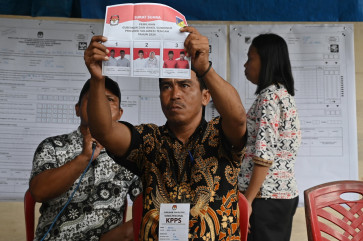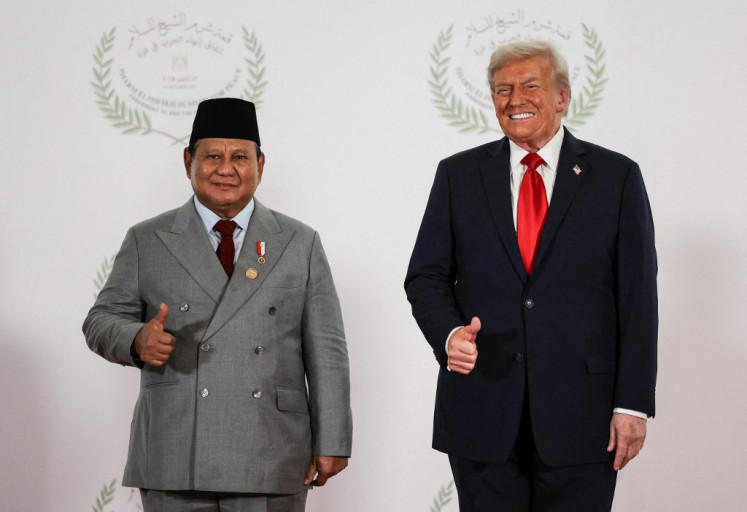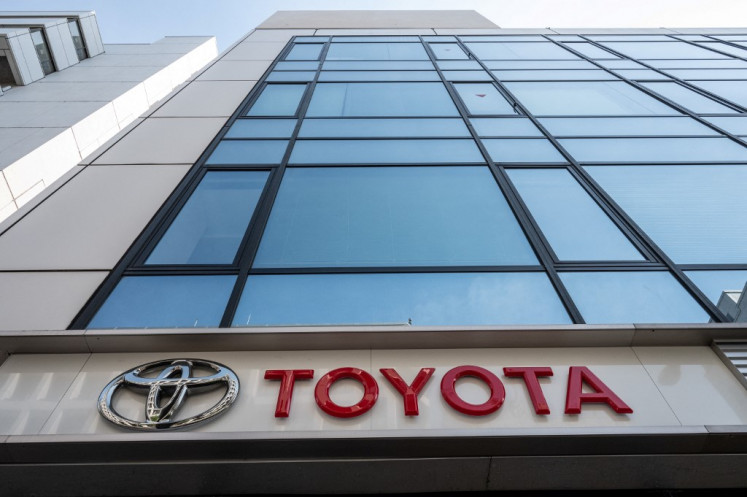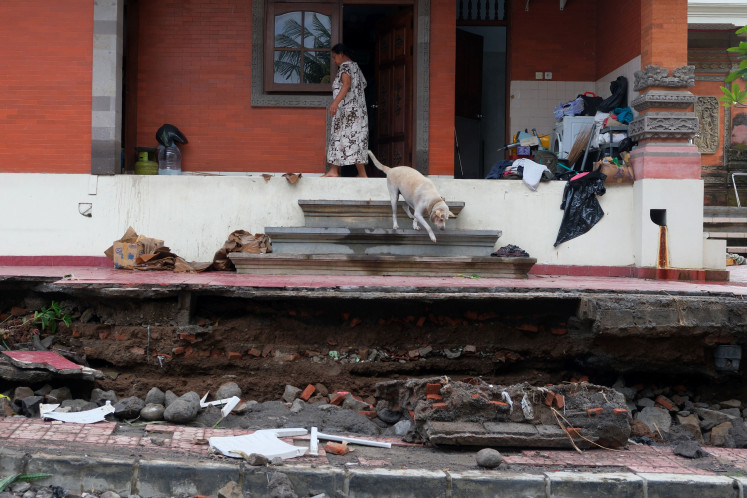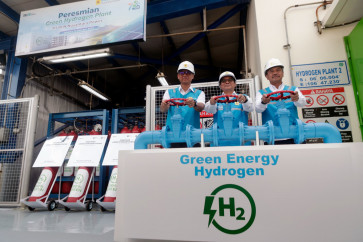Popular Reads
Top Results
Can't find what you're looking for?
View all search resultsPopular Reads
Top Results
Can't find what you're looking for?
View all search resultsPLN overproduces hydrogen, govt mulls incentive for cars
A new incentive targeting hydrogen-powered cars might be on the books as the government considers options on how to absorb PLN's excess supply of the gas, which could help fuel Indonesia's energy transition.
Change text size
Gift Premium Articles
to Anyone
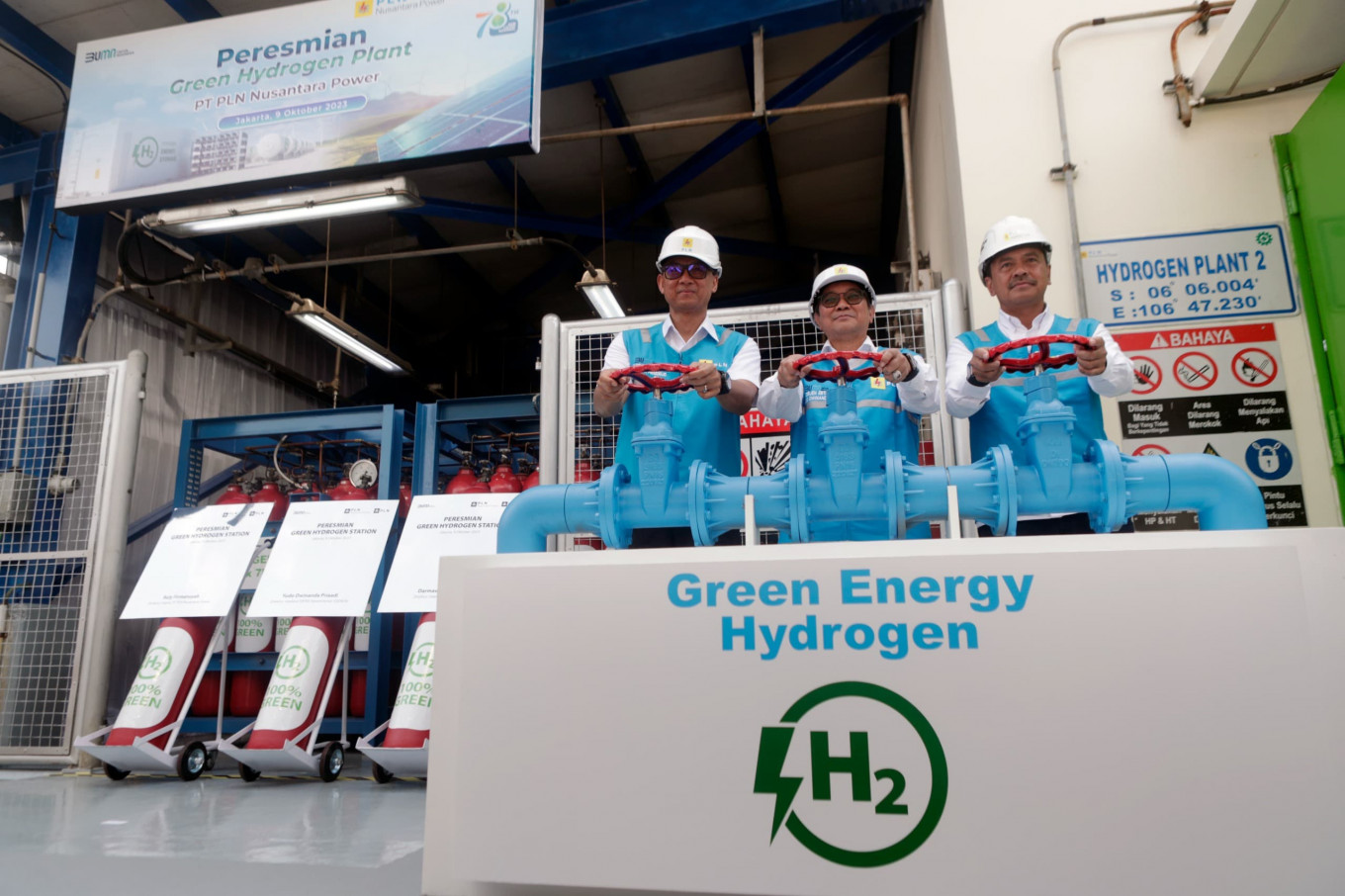 PLN chief executive Darmawan Prasodjo (left) poses with Yudo Dwinanda Priaadi (center), director general of new and renewable energy and energy conservation at the Energy and Mineral Resources Ministry, and PLN Nusantara Power managing director Ruly Firmansyah on Oct. 9, 2023, during the inauguration of a green hydrogen power plant at the state electricity firm’s Muara Karang Steam Gas Power Plant (PLTGU) in Pluit, North Jakarta. (PLN/-)
PLN chief executive Darmawan Prasodjo (left) poses with Yudo Dwinanda Priaadi (center), director general of new and renewable energy and energy conservation at the Energy and Mineral Resources Ministry, and PLN Nusantara Power managing director Ruly Firmansyah on Oct. 9, 2023, during the inauguration of a green hydrogen power plant at the state electricity firm’s Muara Karang Steam Gas Power Plant (PLTGU) in Pluit, North Jakarta. (PLN/-)
S
tate electricity firm PLN is facing an oversupply of hydrogen, as it is producing more of the gas than it can sell to potential buyers and consume at its power plants.
The company produces 203 tonnes of hydrogen each year but only 37 percent of this amount, or 75 tonnes, is used in electricity generation. It thus aims to use the remaining 128 tonnes of surplus hydrogen for other purposes, including hydrogen-powered vehicles.
PLN president director Darmawan Prasodjo said the surplus hydrogen could be sold at a significantly lower price than gasoline of around Rp 550 (3 US cents) per kilometer.
“With hydrogen from PLN’s excess supply, there is no need for investment in generators or electrolysis. The cost is cheaper than gasoline,” Darmawan said on Tuesday at the Global Hydrogen Ecosystem Summit & Exhibition (GHES) in Jakarta.
As an example, he said a gasoline car cost around Rp 1,300 per kilometer while an electric car cost Rp 300-550 per kilometer, depending on where drivers charged their cars.
Meanwhile, green hydrogen, which is the same fuel but produced using renewable energy sources, costs between Rp 1,200 and Rp 1,300 per kilometer.
Hydrogen is typically used in fuel cell electric vehicle (FCEV) technology to power cars.



